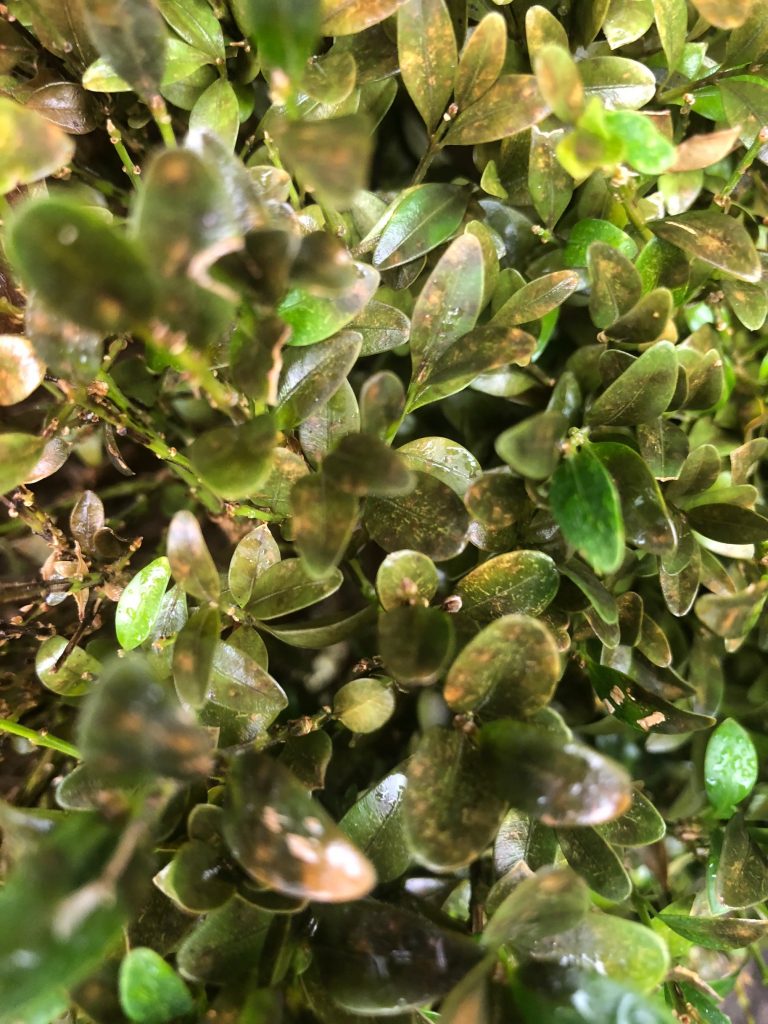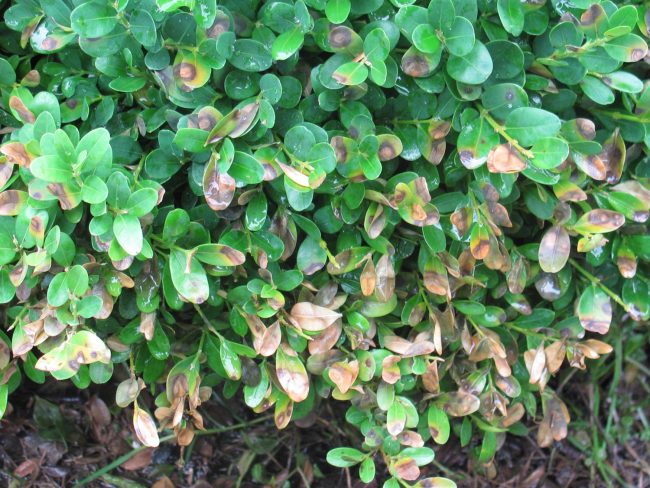
Follow the precautions when working on your boxwoods or pachysandras. Since there is currently no known cure for boxwood blight, a defensive treatment to prevent the blight is the best course of action. The shrub will take on a deformed and disfigured appearance and a once neatly shaped row of boxwoods will look as though they have been through a fire. The remaining leaves on the shrub will turn yellow and plant growth will cease. The branches which the leaves were on will begin to die next. Small brown spot will appear on the leaves and soon thereafter those spotted leaves will fall off the shrub. The disfiguring organism is also called Cylindrocladium pseudonaviculatum or Calonectria pseudonaviculata.īoxwood blight will first manifest itself on the leaves of the evergreen shrub (other evergreens are not in danger from the blight, only boxwoods and pachysandras). This blight that infects both boxwoods and their ground-covering cousins, the pachysandras, is caused by a fungal organism known as Cylindrocladium buxicola. The slow-growing evergreen shrub makes a lovely and long lasting hedge row that is easily maintained, unfortunately it can be wiped out very quickly by a terrible disease called Boxwood Blight. If using a boxwood as a hedge or mass planting, it is best to plant loosely and allow them to grow into each other do not plant tightly.Boxwoods are the go-to shrub for many homeowners that want an attractive living boundary around some part of their property.Water at a time of day that allows the plants to dry quickly.Sanitize pruning equipment before going from one plant to another.Plant in locations with good air circulation.Inspect purchased plants carefully before bringing them home.Please do not bring suspect samples to the Garden. If you feel you have found boxwood blight, you should contact the Illinois Department of Agriculture or send a sample to the University of Illinois Plant Clinic for diagnosis.Defoliation-sections of the plant dropping leaves.



The pathogen can survive in soil and organic matter for years and is easily disseminated by water movement. The primary means of spread is by movement of contaminated plants, but it can also be spread via pruning tools, clothing, equipment, and contaminated soil/organic matter. The pathogen itself does not kill the plant, but weakens it to a poor state of health, allowing secondary pathogens to kill the plant. Call (847) 835-0972, or Click here to show mail address.īoxwood blight (Calonectria pseudonaviculata) is a serious fungal disease that primarily affects boxwood (Buxus spp.), but can also hit Japanese pachysandra (Pachysandra terminalis), and sweetbox (Sarcococca spp.).īoxwood blight causes leaf spots, stem cankers, and defoliation. The Garden’s Plant Information Service can also help you with questions about boxwood blight, but we ask that you do not bring in samples. You can find many great fact sheets online by searching for “boxwood blight” including, Best Management Practices for Boxwood Blight, from the Virginia Cooperative Extension. There is no need to panic, but if you have boxwoods, you should monitor them this growing season. Now that boxwood blight has been found in Illinois, and because boxwood is such a common landscape planting, we should all have a good understanding of this new pathogen. Boxwood blight photo by Mary Ann Hansen, Virginia Polytechnic Institute and State University,


 0 kommentar(er)
0 kommentar(er)
